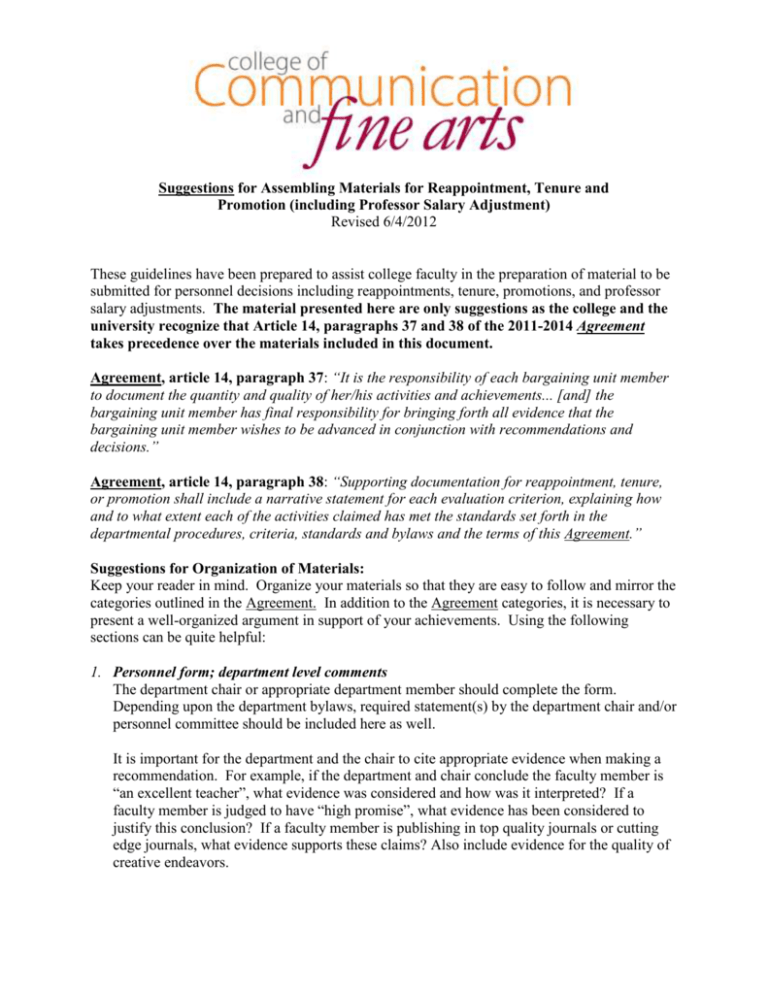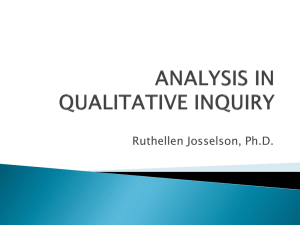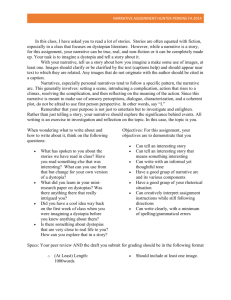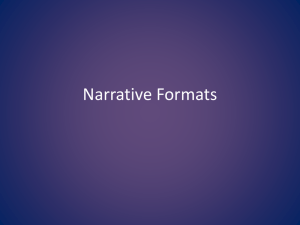Suggestions for Assembling Materials for Reappointment
advertisement

Suggestions for Assembling Materials for Reappointment, Tenure and Promotion (including Professor Salary Adjustment) Revised 6/4/2012 These guidelines have been prepared to assist college faculty in the preparation of material to be submitted for personnel decisions including reappointments, tenure, promotions, and professor salary adjustments. The material presented here are only suggestions as the college and the university recognize that Article 14, paragraphs 37 and 38 of the 2011-2014 Agreement takes precedence over the materials included in this document. Agreement, article 14, paragraph 37: “It is the responsibility of each bargaining unit member to document the quantity and quality of her/his activities and achievements... [and] the bargaining unit member has final responsibility for bringing forth all evidence that the bargaining unit member wishes to be advanced in conjunction with recommendations and decisions.” Agreement, article 14, paragraph 38: “Supporting documentation for reappointment, tenure, or promotion shall include a narrative statement for each evaluation criterion, explaining how and to what extent each of the activities claimed has met the standards set forth in the departmental procedures, criteria, standards and bylaws and the terms of this Agreement.” Suggestions for Organization of Materials: Keep your reader in mind. Organize your materials so that they are easy to follow and mirror the categories outlined in the Agreement. In addition to the Agreement categories, it is necessary to present a well-organized argument in support of your achievements. Using the following sections can be quite helpful: 1. Personnel form; department level comments The department chair or appropriate department member should complete the form. Depending upon the department bylaws, required statement(s) by the department chair and/or personnel committee should be included here as well. It is important for the department and the chair to cite appropriate evidence when making a recommendation. For example, if the department and chair conclude the faculty member is “an excellent teacher”, what evidence was considered and how was it interpreted? If a faculty member is judged to have “high promise”, what evidence has been considered to justify this conclusion? If a faculty member is publishing in top quality journals or cutting edge journals, what evidence supports these claims? Also include evidence for the quality of creative endeavors. 2 2. Table of Contents This is an index (list) of the main components of the narrative and the major sections of the backup materials. It is not necessary to number all pages. 3. Professional vita A current complete vita is expected. Highlight or indicate in some fashion those activities that have occurred since the last reappointment or promotion. 4. Narrative documenting the quality and quantity of work The quantity and quality of your work and the extent to which the department standards for each criterion have been met must be clearly stated and supported in the narrative. Most applicants organize the narrative by sections that correspond to the department and university criteria and standards. Each section begins by stating or summarizing the department and university criteria and standards, followed by the applicant’s response and supporting materials. Each personnel action should have a different narrative in which the personnel action being requested is identified. Reviewers are expected to know department standards and base their personnel decisions on how well candidates meet those standards. They will read the narrative carefully and appropriately check your supporting materials to satisfy themselves that you have provided the depth of evidence to justify your case. Therefore, your narrative is critical to a successful case — it must show how you meet each department and university criterion and standard. It should be straight to the point, with the details and “the actual evidence” left to the supporting materials. Remember: Demonstrate quality and quantity. There are a variety of ways to demonstrate the quality and quantity in each category. Explain how you have met the departmental standard for each criterion of evaluation. Include the date you came to CMU and the date of your last reappointment, or tenure and/or promotion. Clearly distinguish activities that have been done at CMU versus work prior to CMU. If work was done both before and after coming to CMU, give the reader some indication of what and how much was done in each venue. If your scholarly and/or creative activity includes a co-author or is the result of other collaboration, be careful to describe precisely what is your contribution versus that of your co-author/collaborator. Also, for promotion, the narrative should not include references to items that were considered in an earlier promotion decision as evidence for this personnel decision. Be careful of double dipping --- readers tend to spot this immediately. Remember that people who are not familiar with your teaching, scholarly and creative work and service activities will read the narrative. Avoid abbreviations when discussing committee names, professional organizations, etc. 3 5. Supporting materials Organize the material in such a way so that it is easy to locate specific items to which the narrative makes reference. Tab sheets often separate major sections. Successful application portfolios more often than not are organized by sections according to the categories set forth in the CMU-CMUFA Agreement and subcategories identified in departmental bylaws (Teaching Competence, Scholarly & Creative Activity and University Service). Only include materials that are from the allowable time frame for the requested personnel action. A good rule of thumb is to keep everything --- syllabi, grade distributions, unsolicited e-mail messages from students that support your effectiveness as a teacher, e-mails/letters from former student about your effectiveness, correspondence that demonstrates the quality of your scholarship and leadership, awards, etc. It is up to you to decide what supporting materials to submit; however, the most common ones include the following (NOTE: These are just suggestions and should be considered in conjunction with departmental bylaws). Please remember that you must include supporting documentation as evidence for your achievements in each category. Inventory of possible achievements and documentation: Teaching SOS scores REMINDER: Low SOS scores need to be discussed in the narrative and the range of scores must be reported rather than only the “overall instructor effectiveness” question score. “Overall instructor effectiveness” is a stand-alone question and no longer represents an average teaching score. Conversely, high SOS scores should be the subjects of attention, as well. Evidence of your grade distribution is often helpful so that the reader can evaluate the meaning of both high and low SOS scores. Peer evaluations Teaching awards, nominations and recognitions Student comments Unsolicited student and alumni letters Advising performance Instructional materials/websites Relevant assessment data as evidence of learning SRCEE participation of students (direct supervision) Student awards, nominations and recognitions (activities you supervised) Placement of students Development of innovative teaching methods and/or new courses Preparation and/or implementation of grant activities related to the teaching profile Inventory of possible achievements and documentation: Scholarly & Creative Evidence of presentation/publication/performance/exhibit Conference papers Programs Photos Invitation/acceptance letter 4 Reprints Electronic media (audio/videotapes/CDs) External reviews Letters from colleagues at other universities Departmental bylaws may specify other evidence as acceptable such as: Editorship Professional reviews External grants submitted/awarded Awards won When discussing scholarly and creative work, quality and quantity must be documented. Include the following: Type of publication Journal Article Book Chapter Proceedings White paper Abstract Review Citation Authorship/contribution Single author Multiple authors (describe what you did; e.g., % of work you contributed) Subsequent editions (% of work that is new material) Review process Refereed Reviewed by editor Blind reviewed by editor Blind reviewed by multiple reviewers Invited by an editor Outside evaluators/adjudicators Dissemination of publication or level of performance/exhibit International National Regional State Local Including circulation and prestige of publication or performance venue can further strengthen quality of work. 5 Inventory of possible achievements and documentation: Service Type of service Departmental College University Community – service related to academic expertise Professional – service to the profession Student/faculty recruiting Specific contribution(s) to activity/committee Leadership roles and accomplishments A Note on External Review: An external review of your portfolio can add significantly to the credibility of your case. This often takes the form of a written assessment of your achievements from a reputable and knowledgeable faculty member at another institution. NOTE: This assessment is less effective, if not ineffective, when the external reviewer is a co-author of yours.








